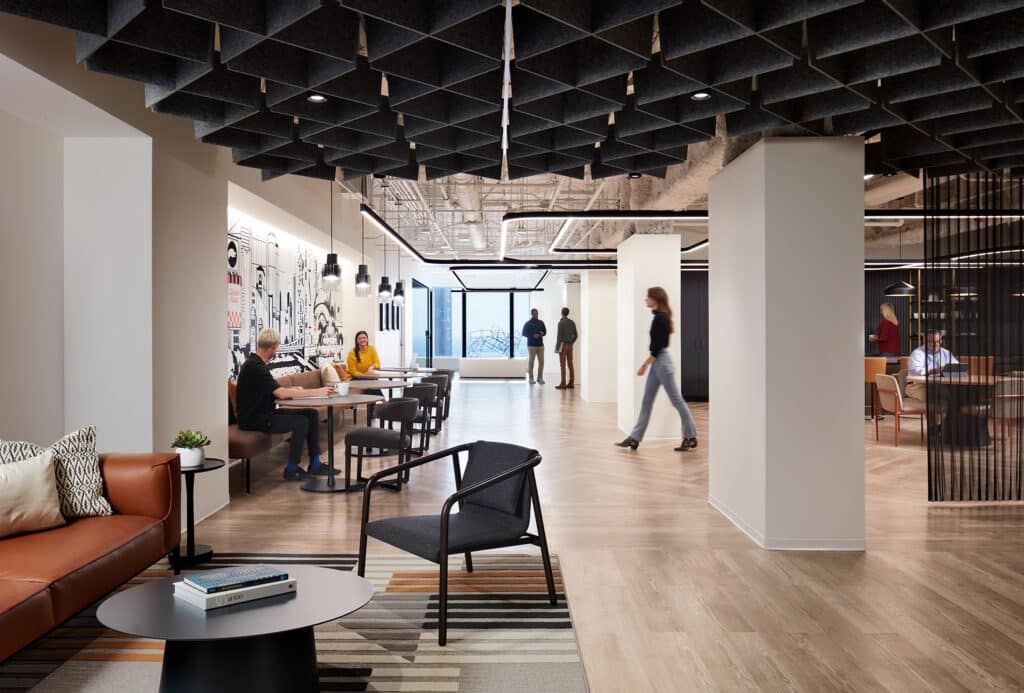Commercial remodeling is a multifaceted journey that transforms a vision into a physical space that reflects business goals, functionality, and aesthetics. Whether it’s revitalizing a tired storefront or adapting a space for a growing company, the remodeling process involves a series of deliberate and coordinated steps. From the first spark of an idea to the finishing touches, commercial remodeling is both an art and a science. In this guide, we explore the complete process—from the initial concept sketch through to the final build—providing a comprehensive view of what goes into reshaping a commercial space for modern needs.
Understanding the Vision: Planning and Concept Development
Every successful remodeling project starts with a clear and defined vision. This early phase is arguably the most important, as it sets the tone for everything that follows. The business owner or client typically begins by identifying the primary goals for the remodel. These could include expanding usable space, improving layout efficiency, enhancing customer experience, or updating the building’s look to reflect a new brand identity. Stakeholders may collaborate with interior designers, architects, or remodeling consultants to articulate their ideas into rough sketches, mood boards, and lists of must-have features.
At this stage, it is also essential to assess the existing structure. Is it fundamentally sound? Are there any code violations or accessibility issues that need to be resolved? This evaluation typically involves site visits, structural assessments, and zoning reviews to ensure the proposed remodel aligns with local regulations and building codes.
Concept sketches evolve during this phase to include more concrete elements: square footage calculations, traffic flow diagrams, furniture layouts, lighting schemes, and other design components. A preliminary budget is also established, shaped by scope, materials, timeline, and contingencies. This high-level planning lays the groundwork for everything that comes next—ensuring alignment between the vision and the practicalities of implementation.
Pre-Construction: Design Finalization and Permitting
Once the concept has been approved, the design process enters a more detailed and technical phase. Architects and designers develop formal drawings, including floor plans, elevations, and mechanical systems layouts. These plans are not only visual blueprints but also technical documents that provide the instructions needed for accurate construction.
This phase often involves 3D modeling or digital renderings, which help clients visualize the end result. These visuals are especially helpful for stakeholder buy-in and identifying any design inconsistencies before construction begins. Design revisions are common and necessary to fine-tune everything from lighting placement to HVAC routes, ensuring the project will function as well as it looks.
In parallel, this phase includes the critical task of obtaining permits and approvals. Most commercial remodeling projects require several layers of compliance, including local building permits, health and safety inspections, environmental approvals, and fire safety certifications. Delays in this stage can stall the entire project, so experienced project managers work closely with municipal authorities to navigate the permitting process as smoothly as possible.
Material selection also begins in earnest during pre-construction. Flooring, fixtures, wall finishes, and cabinetry are chosen not just for aesthetics, but also for durability, maintenance needs, and cost-efficiency. Suppliers and subcontractors are vetted and scheduled, and the final budget and timeline are locked in. A detailed project plan is developed, often managed through construction software to track milestones and deliverables.
Construction: Demolition, Build-Out, and System Installation
With the design finalized and permits in hand, the remodeling project enters the construction phase. This is where the transformation begins to take physical shape. The first step is typically demolition. Outdated walls, fixtures, floors, and ceilings are removed carefully to preserve structural integrity and minimize disruptions to surrounding spaces or tenants. Waste is disposed of according to regulations, often with recycling protocols in place for materials like metal, wood, and drywall.
Once demolition is complete, framing begins. New walls are built, ceilings are lowered or raised, and architectural elements like columns or alcoves are constructed. Tradespeople then install systems such as electrical wiring, plumbing, HVAC, and fire suppression systems. Coordination is key during this phase; each trade must complete its portion in a precise sequence to avoid rework or delays.
Throughout construction, regular site meetings are held to review progress, address challenges, and keep communication open between the contractor, project manager, and client. Unexpected issues can arise—such as discovering outdated wiring or unstable foundations—but experienced teams know how to pivot quickly and implement solutions without derailing the timeline or budget.
The build-out phase also includes “rough-ins” for lighting, internet, and audio/visual systems—features that have become increasingly important in modern commercial environments. As construction nears completion, finishes like flooring, paint, tilework, cabinetry, and trim are installed. These final touches bring the design to life and prepare the space for occupancy.
Quality Control: Inspections, Punch Lists, and Adjustments
Before a commercial remodel can be deemed complete, it must pass a rigorous process of quality control and inspection. This begins with formal inspections conducted by local authorities to confirm that the work meets all building codes and safety standards. Electrical, plumbing, and fire suppression systems are tested. Emergency exits, accessibility features, and air quality systems are all evaluated to ensure the space is safe for employees and visitors.
Simultaneously, the contractor and project manager conduct a “punch list” walk-through. This list identifies any items that are incomplete, incorrect, or below quality standards. These might include paint touch-ups, uneven tiles, improperly installed fixtures, or issues with doors and hardware. The contractor is responsible for resolving each item on the punch list, ensuring that every detail matches the approved plans and expectations.
Client feedback is also gathered during this phase. They may identify functional or aesthetic elements that require adjustment—perhaps a shelving unit is positioned too high, or lighting is too dim in a key workspace. These refinements are made quickly and efficiently before the final sign-off.
A post-construction cleaning is then conducted to remove dust, debris, and construction materials. This ensures the space is ready for occupancy and presents a professional, polished appearance. Some remodelers also offer a “soft opening” or preview period, during which the client can test systems and layouts in real-world conditions before fully launching the space for public or internal use.
Project Closeout: Handover, Maintenance, and Long-Term Value
The final stage of the commercial remodeling process is the project closeout. At this point, all construction work is completed, the space has passed inspections, and the client has approved the finished product. However, closeout involves more than simply handing over the keys. It includes the delivery of as-built drawings, operation manuals, and maintenance instructions for mechanical systems and finishes.
Training may be provided to staff who will be using specialized equipment or systems. For example, facilities managers might receive guidance on operating HVAC systems, lighting control panels, or energy-saving features. This education helps prolong the life of the remodeled space and ensures its efficient operation.
Warranties are issued for materials, equipment, and labor. These documents serve as important protection for the client in the event of defects or performance issues down the line. Reputable contractors typically offer a warranty period during which they will return to address any problems that emerge after occupancy.
Some remodeling firms also offer post-occupancy evaluations. These follow-up visits allow clients to provide feedback on the space’s functionality and identify any unforeseen issues. These insights can help the remodeling team refine their approach for future projects, and they also serve to strengthen client relationships.
Conclusion
In the long term, a well-executed commercial remodel delivers significant value. It enhances the visual appeal of the business, improves workflow and efficiency, increases customer satisfaction, and can even raise the property’s market value. Moreover, a remodel designed with flexibility in mind allows a business to adapt to future growth, technological changes, and shifting consumer preferences.
Ultimately, the journey from concept sketch to final build is one of collaboration, precision, and creativity. By approaching each phase with care and professionalism, commercial remodeling can turn bold visions into tangible realities—transforming ordinary spaces into dynamic environments where businesses thrive.






